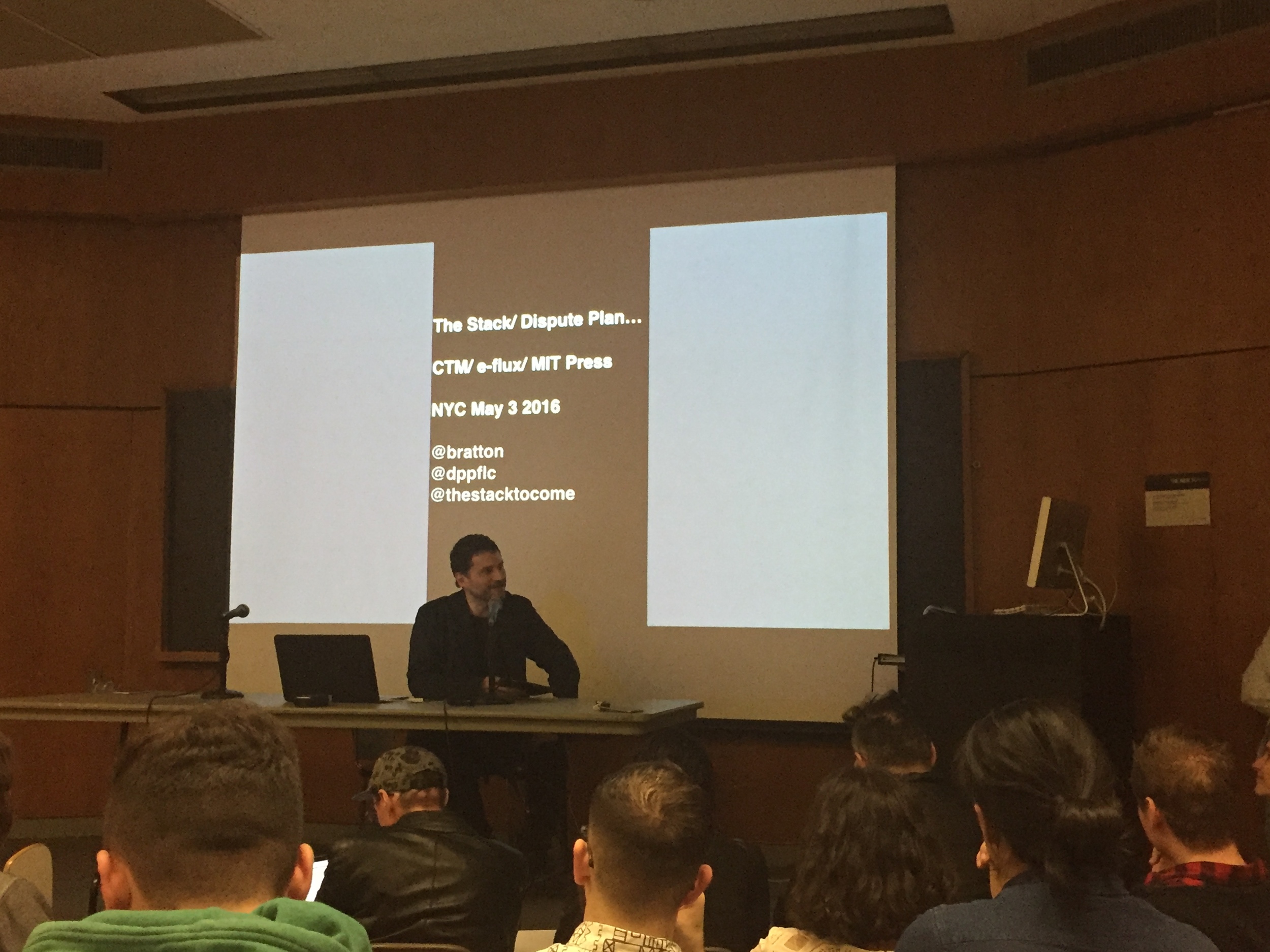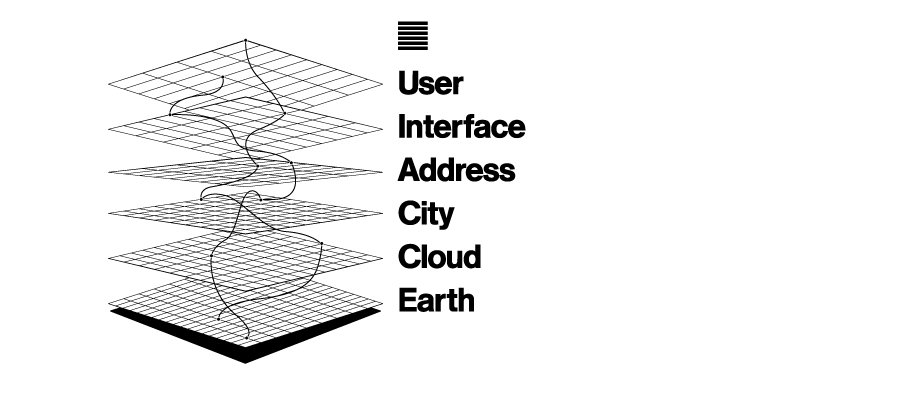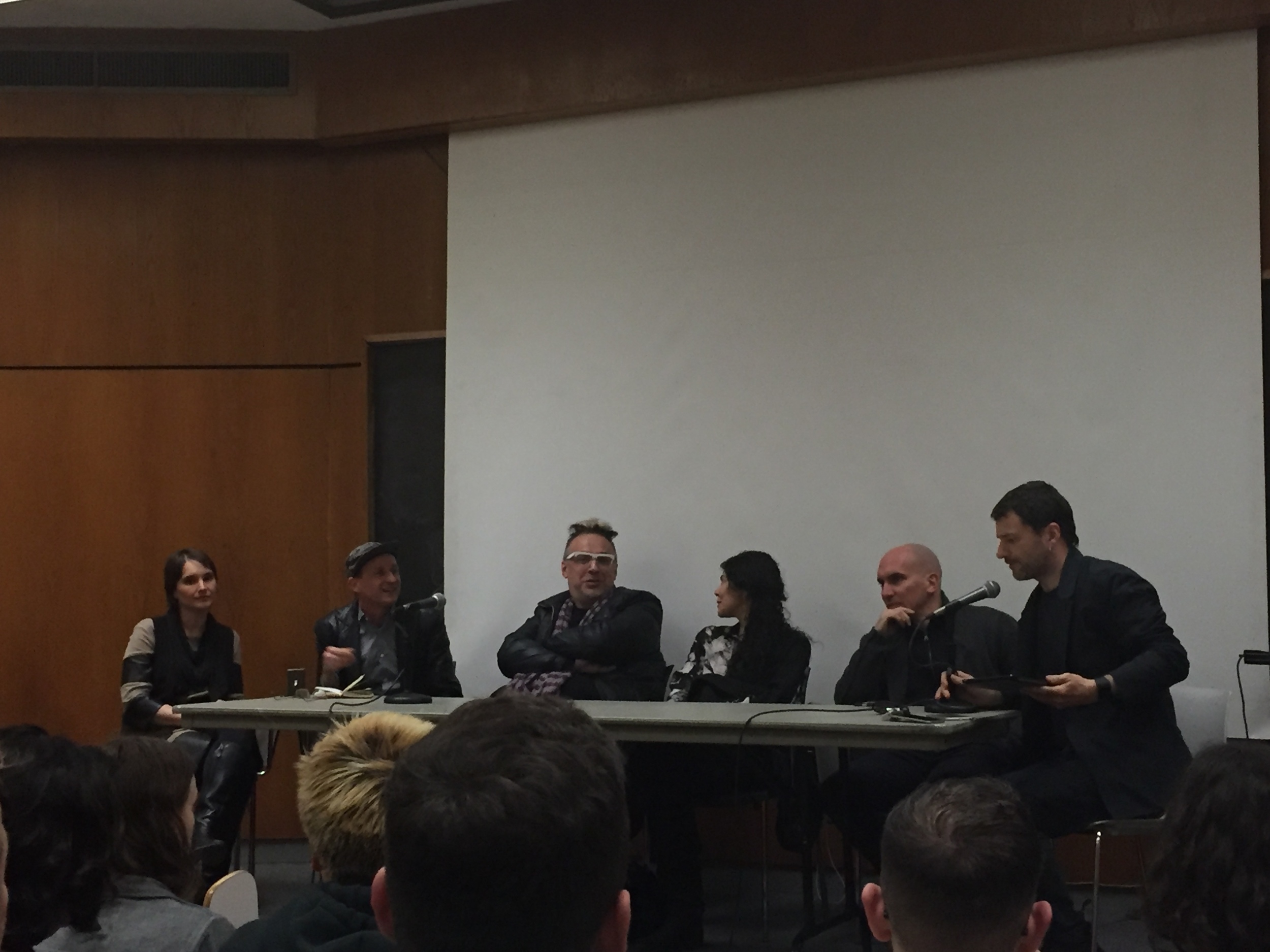The New School >> May 2016
Resources:
- https://mitpress.mit.edu/books/stack
- http://www.e-flux.com/
- http://www.e-flux.com/books/dispute-plan-to-prevent-future-luxury-constitution/
- https://en.wikipedia.org/wiki/IPv6
- http://www.nanovr.com/
- http://www.e-flux.com/journal/the-black-stack/
- http://imagination.ucsd.edu/_wp/projects/deep-address/
THE STACK
"Humans are slowly vanishing as their human biomass begins to swell.... We are the robots for future insects..."
A design brief:
The Stack: User >> Interface >> Address >> City >> Cloud >> Earth
Earth: computation, information complexity. Where the minerals come from to make silicone. The minerals in Africa to create our technology... The stack terraforms its host planet, spitting up mobile phones. 'Digitality' is just as physical as any other entity (data centers and their carbon footprint). A network of electrons that are routed to create our machines.
Cloud: It is not placeless, it has a geography. The platforms are a hybrid of sovereign and non-sovereign lands.
City: Cities are modules of hardware that fit together into a larger network. Sensors in our phones. We are both sensored and sensed. Infrastructure for living and non-living matter. AI urbanism. Urban scale sensors. AI as the city -> population to genome... Anthropic projection....
Address: For something to appear in the stack it must have an address. This is a set theory problem. IP address - IPv4 VS IPv6 (10^23 addresses per person). Deep address. Could you address individual cells?
Interface: any threshold point between two complex systems. The GUI. We become a species of button pushers. Cognition and action. AR promises to further divide humans culturally and politically. Nano VR - Visualizing at the chemical scale.
User: The user as political subject. The user is an open position. The user interacts with the platform. BE HAVE KNOW. Nonhuman, inhuman, exohuman. Humanist exceptionalism. Sensory medium in human evolution: camera, sensors (heat, pressure, ambient air)... machine vision. Deep dream. Is Google the AI as paranoid of how it sees us as we are in seeing it? (trained on a data set of dogs, so it will hallucinate dogs) Is machine vision paranoid? Are they watching you, if so, what are they seeing?
Panel:
- Julieta
- Ed Keller
- Carla Leitao
- McKenzie Wark
- Matteo Pasquinelli
- Lev Manovich
“The rise of mathematical theories of communication in the middle of the 20th century made possible the emergence of planetary scale cyberinfrastructure across the scale of whole continents. With the discovery of DNA we began to understand that life itself is informational. We haven’t fully grasped the implications. With the Deep Address initiative, we are interested in what kinds of design problems can be posed by thinking across such scales at once, from the intercontinental and the intercellular, if you like. Universal addressing platforms, like IPv6, are one way that the real movement of information between scales can be conceptualized and diagrammed.
”



